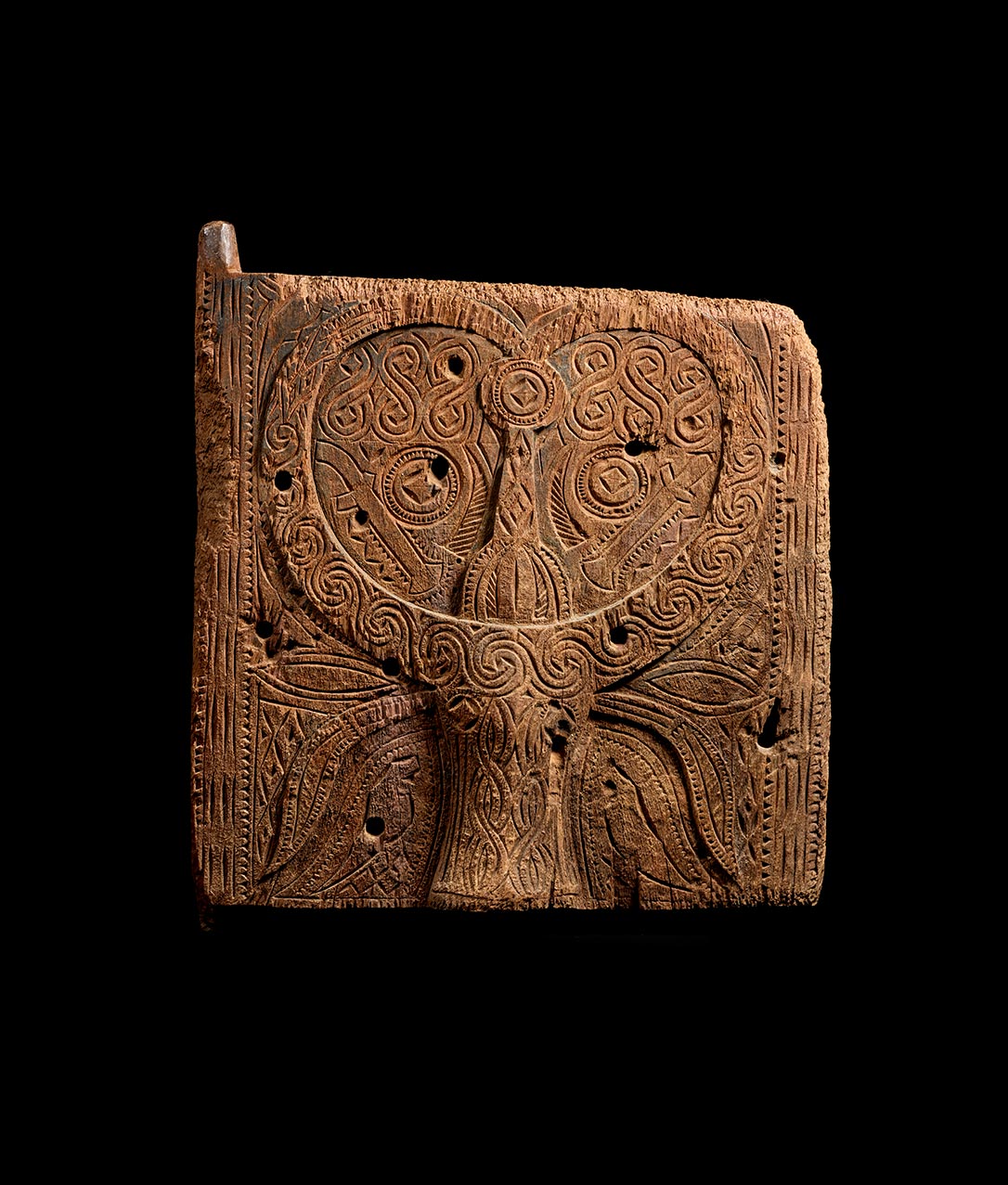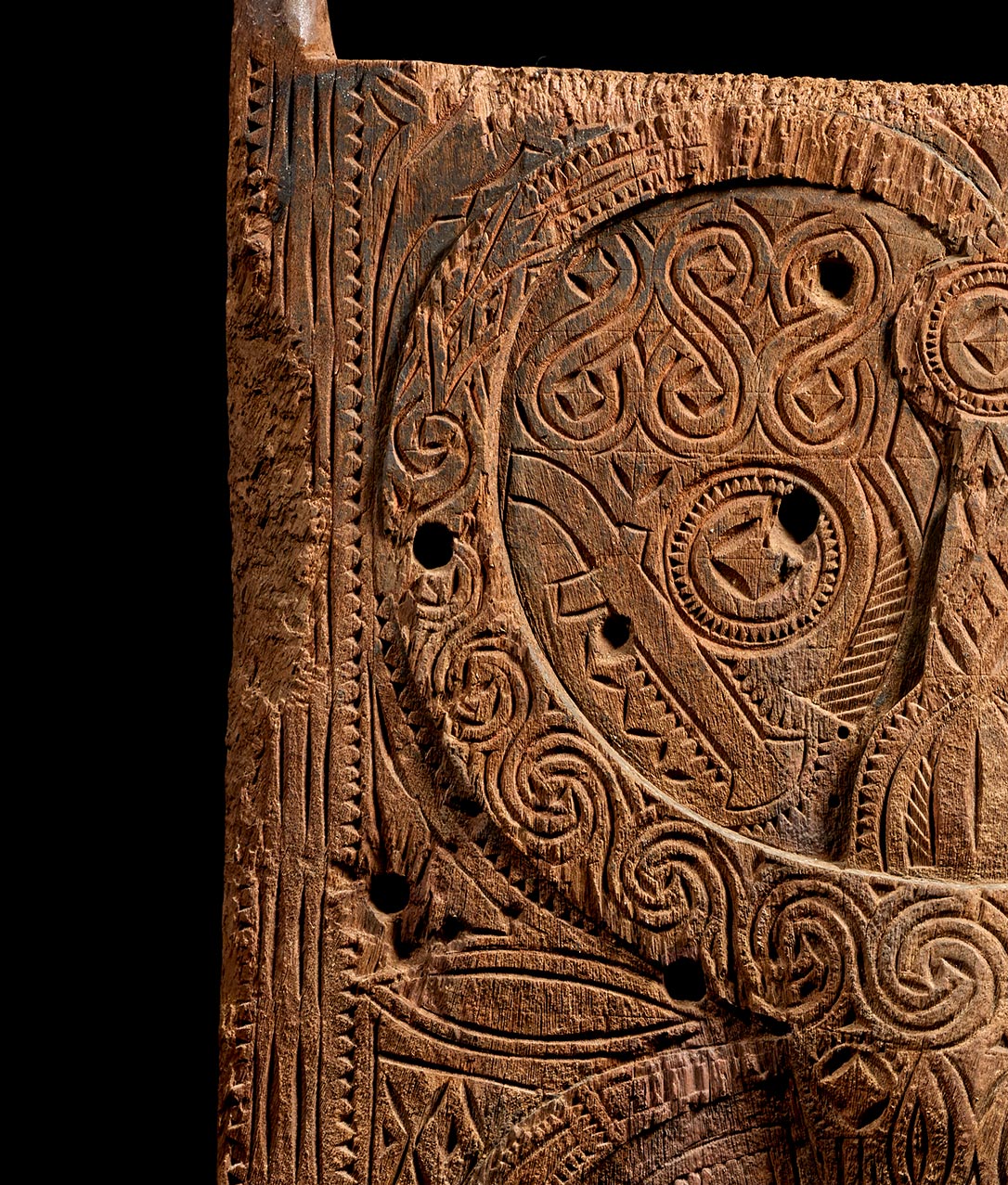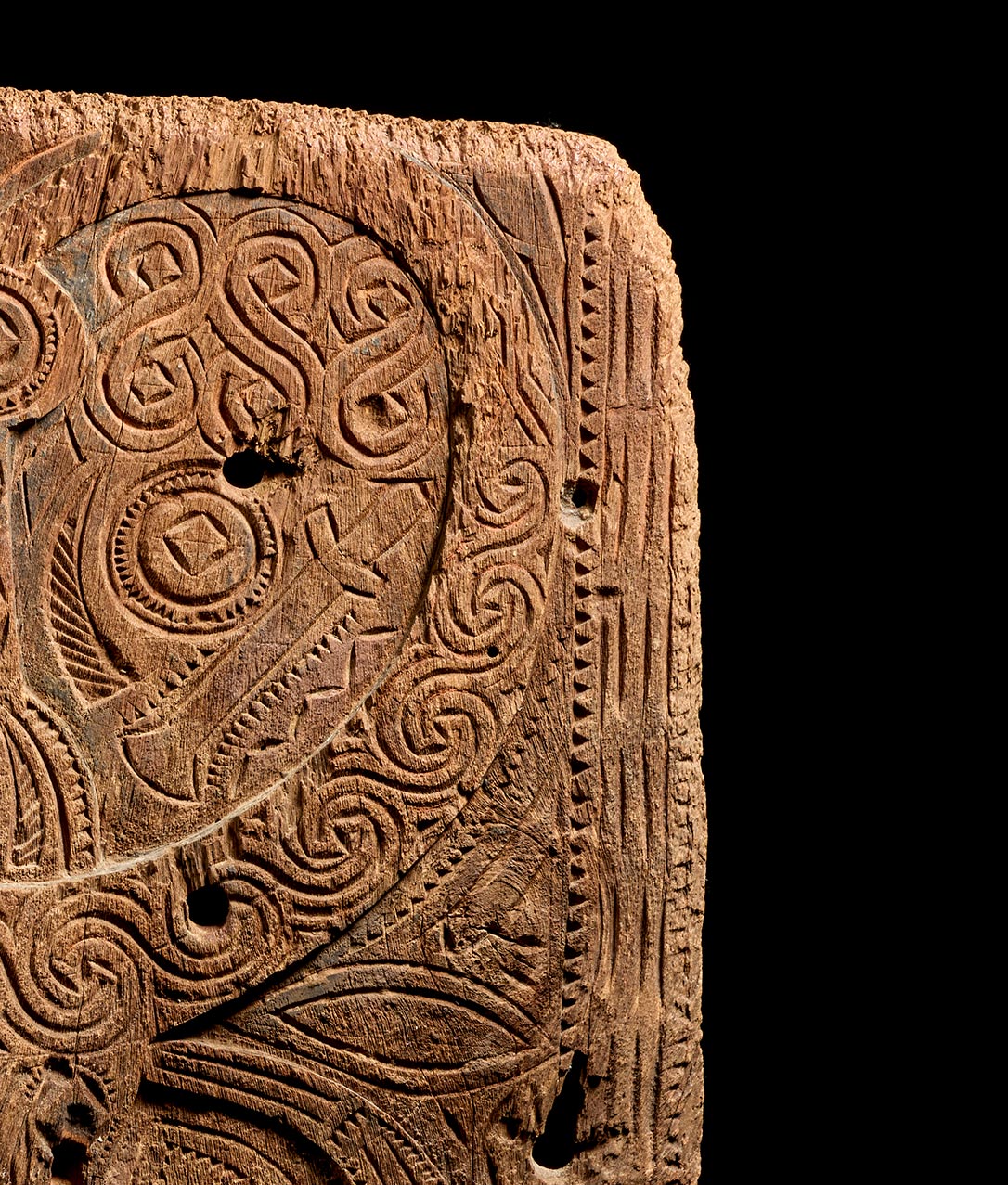Door
Toradja, Sulawesi, Indonesia
19th century
Provenance: Gerald Minkoff and Miriel Olesen collection, Switzerland
The Toraja bury their dead in cliff caves that are sealed with wooden doors carved with ancestor figures or the head of a buffalo, a symbol of fertility and wealth. Similar doors are also used to close off granaries. Such doors were placed at the entrance to crypts carved in limestone cliffs. They served as doors to crypts which held the remains of members of the aristocracy. Doors with images of water buffalo are said to have been used especially for priests. The buffalo is an important animal in Toradja culture where it serves as an important store of wealth and a symbol of prestige. The present example is carved in high relief, the central water buffalo head is surrounded by classical Toradjan scrolling and linear patterns. The buffalo is an auspicious motif in Toraja culture, and the staff between the horns is a symbol of defense or protection for the dwelling. Made of extremely dense and hard wood, it has an almost “fossilized” appearance.
Height: 23 in / 58.4 cm
Door
Toradja, Sulawesi, Indonesia
19th century
Provenance: Gerald Minkoff and Miriel Olesen collection, Switzerland
The Toraja bury their dead in cliff caves that are sealed with wooden doors carved with ancestor figures or the head of a buffalo, a symbol of fertility and wealth. Similar doors are also used to close off granaries. Such doors were placed at the entrance to crypts carved in limestone cliffs. They served as doors to crypts which held the remains of members of the aristocracy. Doors with images of water buffalo are said to have been used especially for priests. The buffalo is an important animal in Toradja culture where it serves as an important store of wealth and a symbol of prestige. The present example is carved in high relief, the central water buffalo head is surrounded by classical Toradjan scrolling and linear patterns. The buffalo is an auspicious motif in Toraja culture, and the staff between the horns is a symbol of defense or protection for the dwelling. Made of extremely dense and hard wood, it has an almost “fossilized” appearance.
Height: 23 in / 58.4 cm













